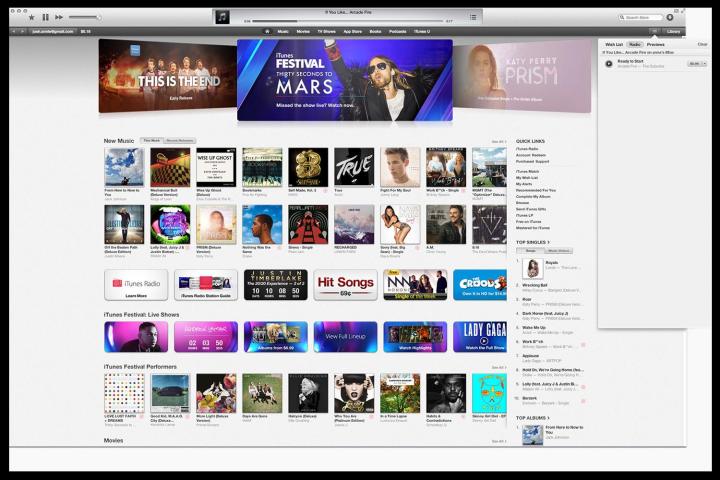
Dropping for the first time in the last 10 years, sales of both digital tracks and albums during 2013 did not exceed sales for the previous year according to Billboard. In fact, digital track sales are down from 1.34 billion units in 2012 to 1.26 billion units in 2013, a decline of nearly 6 percent. Digital album sales did not plummet as precipitously, just down 0.1 percent over the previous year. However, analysts had expected digital album sales to be higher due to excellent performance of album bundles during the first half of 2013.
When asked about the downtown, many industry executives are blaming the growing popularity of services like Spotify, iTunes Radio, Pandora and Rdio that offer easy music streaming for people utilizing mobile devices like smartphones and tablets. However, it’s likely that revenue generated from the streaming services could somewhat offset the decline in digital music sales. To what degree that streaming services will make up the difference is anyone’s guess.

Physical compact discs are continuing on a much sharper decline though, specifically a 14.5 percent drop year over year at nearly 30 million fewer units sold. In fact, digital sales comprise approximately 40 percent of the pie at this point with compact discs still making up 57 percent of all music sales. Interestingly, vinyl’s resurgence is continued last year jumping from 4.55 million album sales in 2012 to 6 million in 2013. The top selling album during 2013 was Justin Timberlake’s 20/20 Experience at 2.4 million units and the top selling Robin Thicke’s Blurred Lines at about 6.5 million units.
Regarding market share of album sales, online digital stores, such as iTunes or Rhapsody, comprised over 40 percent of all sales. Box box retailers, like Walmart and Target, snagged 27 percent of the market and electronic brick & mortar retailers like Best Buy were responsible for 13.5 percent of all album sales. Online-only retailer Amazon also make up 12.6 percent of all album sales in the United States.


